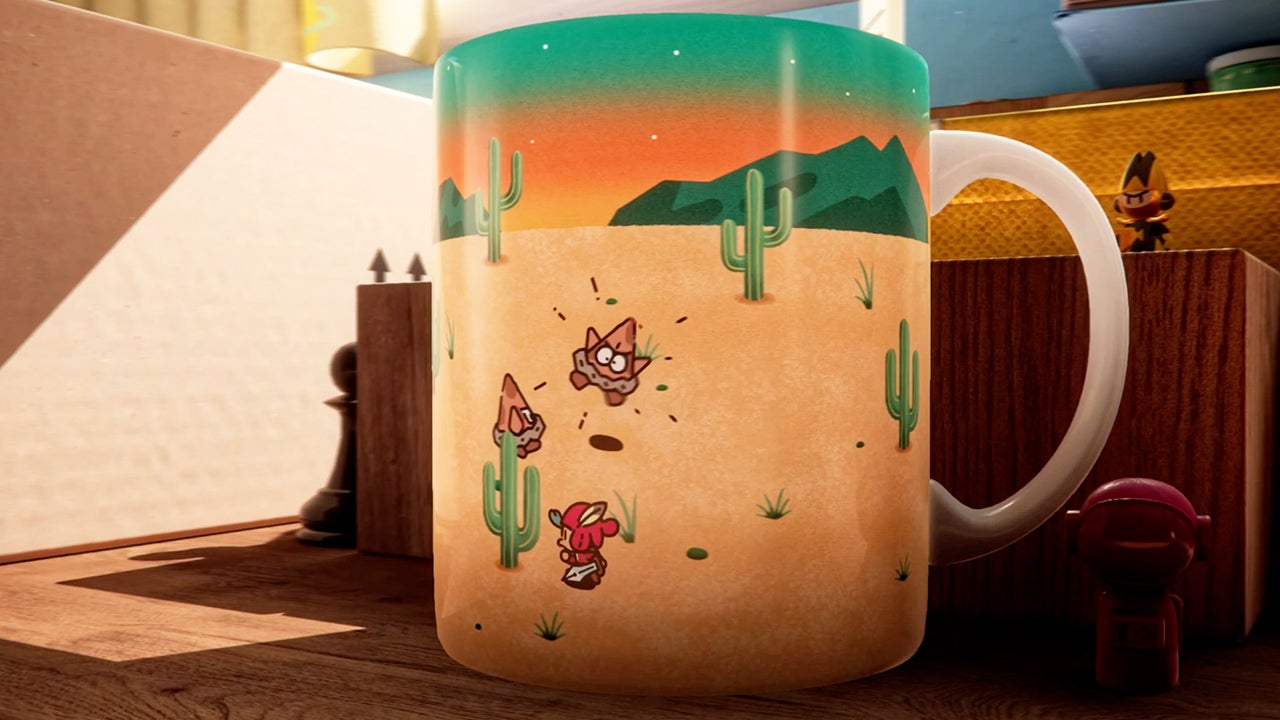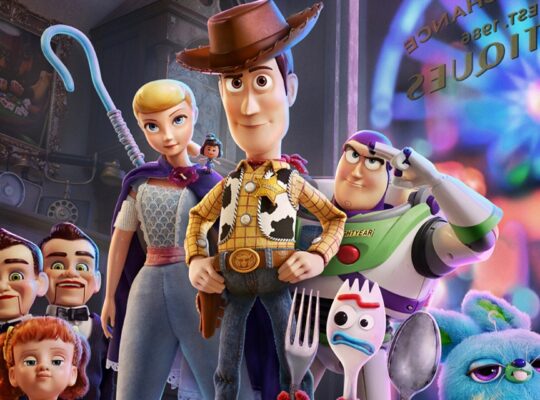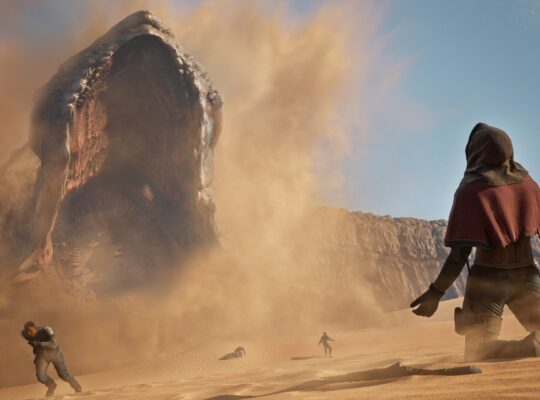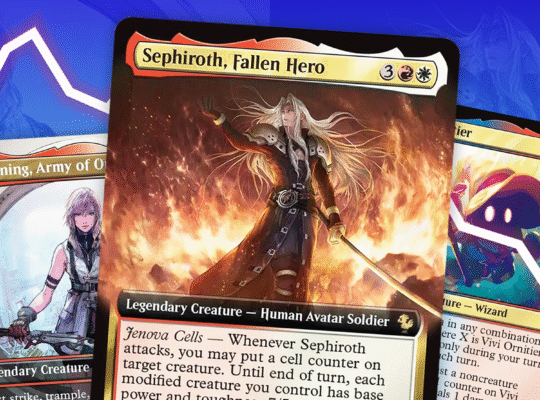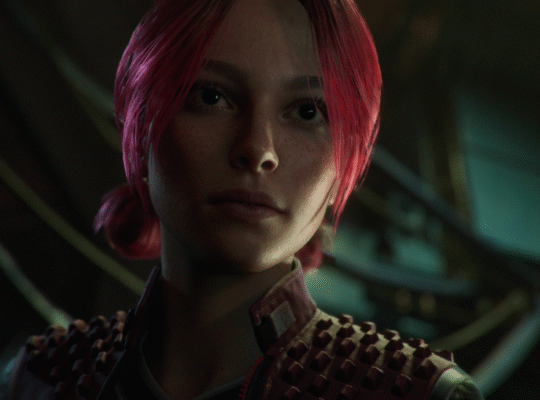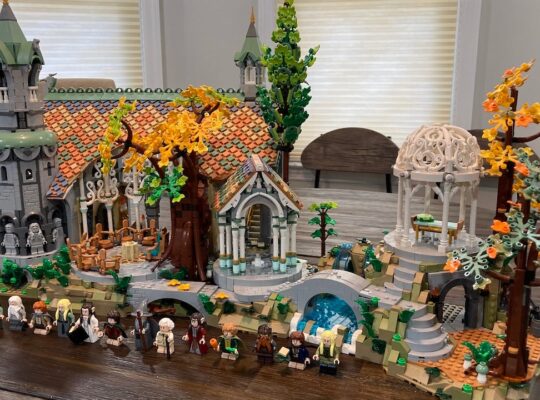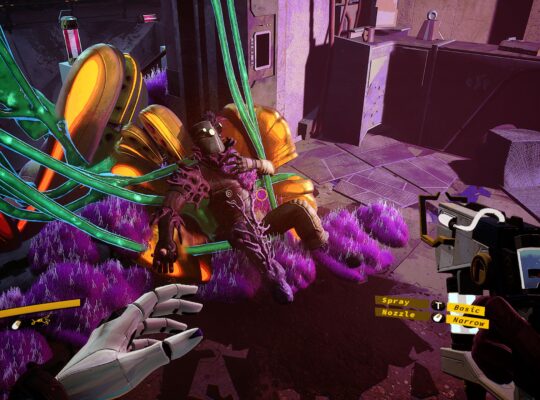Sometimes, a video game feels like it was made just for you. That’s never true, of course, unless you’re a solo developer making your own indie game, but I reckon you know the feeling. It happens when a game just speaks to you, when the art, music, and gameplay feel tailor-made to your taste and you can’t keep a smile off your face while you’re playing it. That’s how I felt playing The Lucky Squire, the first game from All Possible Futures.
You step into the shoes of Jot, the titular Plucky Squire, a… well, squire of great renown who defends the land of Mojo, a place of unbridled creativity, from the malevolent Humgrump. Jot’s also something of a writer, and his skill with a quill means he turns his adventures into books that people adore. World-saving hero, beloved author? What more could a guy want?
The first thing you’ll notice about The Plucky Squire is its look. It’s quite literally set in a children’s storybook, with areas mapped to each page. When you move on, the page will turn, taking you to the next area or revealing a bit more of the story, and each “level” in The Plucky Squire is its own chapter. It’s a charming setup, but a great conceit is only half the battle. The Plucky Squire pulls everything together with beautiful sprite art that evokes childrens’ books you might find on the shelves of your local library. Everything is bright, colorful, and gorgeously animated. Seriously, I think this is one of the prettiest games I’ve ever seen. I mean, just look at it.
Seriously, I think this is one of the prettiest games I’ve ever seen.
My three-hour demo started by sending me on a quest to help my wizard friend, a sunglasses-wearing, Merlin-from-The-Sword-in-the-Stone-looking dude named Moonbeard get some beeswax so he could press some more vinyls. What can I say? He likes to DJ. A suitably humble origin story, but every hero’s journey begins somewhere. The Plucky Squire starts off playing like the top-down Zelda games of yesteryear; Jot’s armed with little more than a sword, a rolling dodge, his wits, and a cunning hat with a quill fit for the Bard. You’ll cut down small goblins and bugs, but it feels as good as it looks.
Master of Magics
But that’s not all that Jot or The Plucky Squire is. There’s platforming segments that wouldn’t be out of place in a Mario game, and to nab the beeswax that Moonbeard needs, you’ll have to face down a honey badger in a boxing match that looks like it was plucked (get it? Do you get it?) straight out of Punch-Out. All right, Plucky Squire. I see you. Needless to say, Jot lands the knockout blow, because that’s what heroes do.
Yes, everything’s coming up Jot until Humgrump starts causing trouble again. And that’s when things truly get wild. See, Humgrump has figured out that all the world’s a stage and you’re merely players. The story’s been written, which means he’s destined to lose every time he and Jot throw down, and he’s not a fan. Not one bit. Lucky for him, and unluckily for Jot, Humgrump’s a wizard. That means magic, and he uses it to kick Jot out of the book and into the real world.
Suddenly, I wasn’t playing a 2D game anymore; I was playing a 3D game. The beautiful sprite art? Replaced by equally gorgeous 3D models that look like they’re visiting from the Switch remake of Link’s Awakening. I had to get home to Jot’s storybook, which meant platforming around Sam’s, the kid who owns this particular copy of The Plucky Squire, desk, all while avoiding Sam’s pet beetles.
Mightier Than the Sword
Jot may not be as powerful in the real world as he is in his storybook, but he soon picks up a new trick from a friendly bookworm named Page: the ability to enter any piece of paper as his sprite self, A Link Between Worlds-style, provided it has a portal to let him in, and bring objects into the book from the real world, and vice versa. Armed with the power to enter and exit the book and turn the pages at will when he’s on the desk thanks to a pair of special gloves called the Turn Gauntlets, you head back into the storybook.
And this is where The Plucky Squire really, and I mean really, gets interesting. Humgrump used his magic to really mess with the story of the book, but that’s not going to stop Jot. He’s a writer, which means he can manipulate the words on the page, and by doing so, change the book, too. Can’t get to what you need in this forest? Swap the word “forest” for “ruins,” and you’ll be able to maneuver more easily. A huge bug blocking your path? Switch the word “huge” for “tiny” and you’ll get past him in no time.
What makes The Plucky Squire so delightful and unique are how all of these mechanics come together to create fun, interesting scenarios. Here’s an example: at one point, I needed to make it daylight on a page so I could get around the frogs who come out at night to sing. Now, I like a good chorus of frogs at night as much as the next man, but they were blocking the paths I needed to access. So I exited the book, went back to a previous page, grabbed the word “daytime,” turned back to the page I needed, jumped back into the book, and replaced “night” with “daytime” to let the sunshine in and move them out of the way. Of course, that caused new problems, but between my ability to enter and exit the page in multiple places and Jot’s skill as a wordsmith, I managed to get to the next page.
A Real Page-Turner
And the special, one-off section where I played Punch-Out against the honey badger? Stuff like that is everywhere. Once, in need of a bow, I jumped into a Legally Distinct Magic Card on Sam’s desk to do battle with an elven archer. She was certain I was in league with Humgrump, but I managed to convince her otherwise. The cool part, though, was that the whole sequence played out like a turn-based battle in an RPG. And later, when I had to use the bow to take out the bugs? I was essentially playing a lightgun game. All of these sections were fun and unique, and none overstayed their welcome.
All of the special, one-off gameplay sections were fun and unique, and none overstayed their welcome.
Of course, the core gameplay is no slouch either, whether you’re platforming around Sam’s desk or fighting goblins in the storybook. Oh, and did I mention that you can use the currency you find in the world to upgrade Jot with things like the ability to throw his sword or use a spin attack or buy concept art? Because you can, though there’s not enough to buy everything, at least not in the sections I played, which will hopefully open up interesting build choices in the full game. And then there’s the delightful supporting cast, from the funky-yet-wise Moonbeard to Jot’s friends, the powerful trainee witch Violet, who should probably believe in herself a little more, and the totally radical mountain troll, Thrash, who… well, just seems like he’s there to have a good time. Oh, and Minibeard, a mini version of Moonbeard who doles out puzzle advice. Minibeard rules.
If I had to sum up my time with The Plucky Squire in two words, I’d go with “charming” and “unique.” You can pick out The Plucky Squire’s influences, but what I played was so well put together that it never stopped feeling like anything other than itself and its excellent sense of pacing meant it never overstayed its welcome. It’s a game that immediately clicked with me, and when my time with the demo was over, I was a little sad. It’s rare to find something that feels this unique, and I can’t get over the feeling of wonder I had while playing it. I hope All Possible Futures can maintain that feeling throughout the full game.
As any good writer will tell you, a good story takes time, and I’m more than willing to wait for All Possible Futures to write the final words and lay down their quill. In the meantime, I’ll be pouring over the chapters I’ve read, looking for things I missed, trying out the other upgrades, and just enjoying the vibe, waiting until the time comes to turn the next page.


